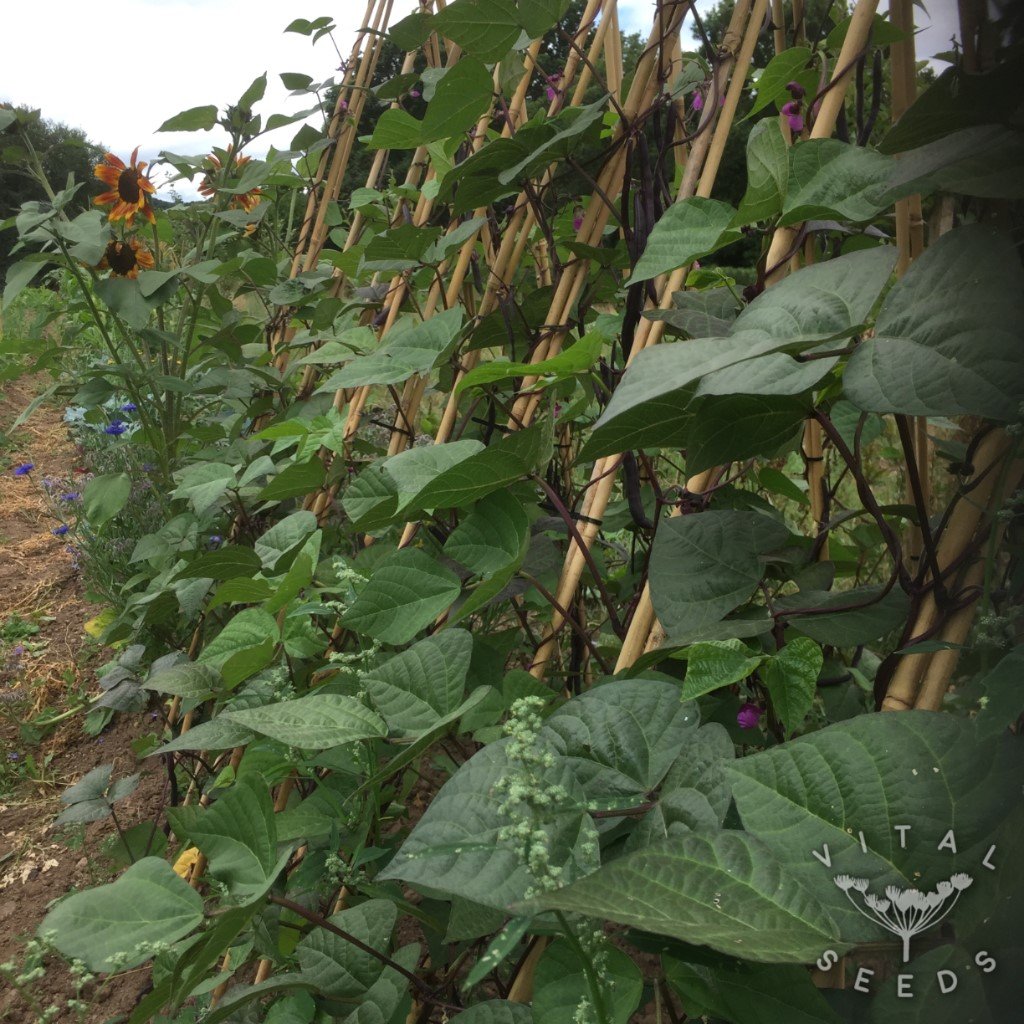Climbing French bean – Blauhilde (Organic)
£2.95
A stringless, climbing French bean from Germany producing lots of very dark purple pods that turn green when cooked. We like to grow a variety of different colour beans as they are such a versatile crop. Blauhilde can be grown outside or indoors and makes an excellent market garden variety as it’s productive, disease resistant and exquisite in taste.
(Approximate seed count – 80)

In stock
| Month | J | F | M | A | M | J | J | A | S | O | N | D | ||||||||||||
|---|---|---|---|---|---|---|---|---|---|---|---|---|---|---|---|---|---|---|---|---|---|---|---|---|
| Sow | ||||||||||||||||||||||||
| Plant | ||||||||||||||||||||||||
| Harvest | ||||||||||||||||||||||||
Seed Sowing
Climbing and dwarf beans can be direct-sown outside from May until the beginning of June, when the soil has begun to warm up.
You can also sow seeds into deep modules or small pots undercover from mid-April to May, planting outside into their final position when the risk of frost has passed.
Try doing multiple sowings from April – June to spread out your harvest.
Transplanting
Dwarf beans are useful for more exposed gardens or smaller spaces like raised beds and containers.
For climbing beans, we recommend building the climbing structure first, using bamboo canes distanced 65x40cm (or 50x50cm) apart and then planting four beans at the base of each cane 4cm deep. This way you will know exactly where the beans are planted and you won’t damage the roots when building the structure.
Choose a sunny, sheltered spot in the garden and amend soil with compost or well-rotted manure before planting.
Plant Care
Keep plants well-watered, especially in dry conditions. Some climbing plants may benefit from being wound onto the canes if they don’t attach themselves quickly.
Challenges
Protect young seedlings from slugs and snails and be sure to check for mice damage if your germination seems slow – beans are one of their favourite snacks!
Harvest
Cropping usually starts from around mid-summer, depending on when the seeds were sown, and often continues for eight weeks or more depending on the variety. Pick pods when they are young and tender, before the beans inside are fully formed and the pods become stringy and tough. Regular harvesting (every couple of days) will encourage the plants to produce plentiful flowers for longer harvests.
Seed Saving
If you’re saving beans for seeds, make sure you select some plants specifically for seed early on in the season. They should be healthy, productive and show characteristics that are true-to-type. If you’re saving French beans make sure you grow your seed crop at least 6 feet from another variety to prevent cross pollination between varieties. Runner beans will need to be separated from other bean crops by a much larger distance, up to ½ mile.
To save the seeds, allow the pods to mature fully on the plant until they start to yellow and dry. Pods can be collected individually in wet weather, otherwise harvest the pods all at once and spread out somewhere protected from rain with good airflow until they are fully dry. Once dry, shell out the beans and dry out further until they feel firm. Store in airtight container.


